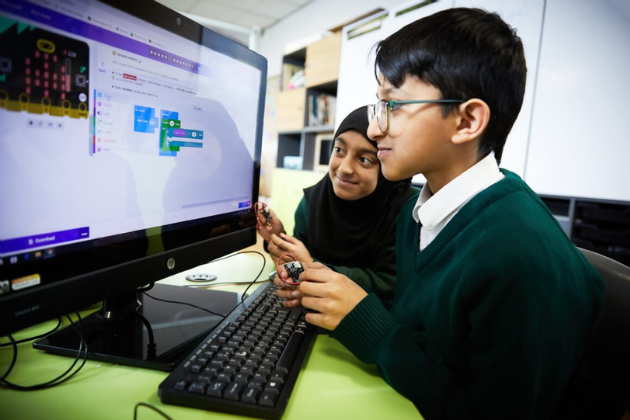Tiny tech, big discoveries: exploring data logging with the micro:bit
09 May 2024

In the ever-evolving landscape of education, integrating technology into the classroom has become increasingly essential for fostering engaging and interactive learning. Among the myriad of devices, the micro:bit stands out as a versatile and user-friendly microcontroller, which holds immense potential for your primary classroom.
With the help of the micro:bit next gen initiative, you may have found yourself with your free classroom pack, wondering what to do next… One exciting possibility to explore is data logging, a hands-on approach to exploring scientific concepts and enhancing critical thinking skills. Keep on reading to delve into how the micro:bit could revolutionise the data logging experience for your young learners.
Introduction to the micro:bit
The micro:bit is a pocket-sized programmable device, equipped with various sensors and LED lights. It serves as an ideal platform for introducing primary school pupils to the basics of coding using a physical device. It uses an intuitive block-based coding platform, similar to other familiar primary tools, making it accessible for key stage 2 and supporting them to unleash their creativity and problem-solving skills.
Why data logging?
Data logging involves collecting and recording data from sensors, often over time, providing learners with a tangible means to observe, analyse, and draw conclusions from real-world phenomena. By engaging in data logging activities, pupils not only develop their computing skills, but also gain a deeper understanding of scientific concepts and processes.
Using the micro:bit for Data Logging
The micro:bit V2 is packed with sensors for light, temperature, magnetism, acceleration, and sound. The device enables learners to record, store and retrieve data from these sensors. Our new free 90-minute CPD: ‘Using micro:bits to collect data in school surveys’ explores how to use the micro:bit to collect data and partake in the national BBC micro:bit playground survey. The CPD will give you hands-on experience of how to collect data with the micro:bits, exploring the different activities within the playground survey project, and show you how to use the devices in the classroom to collect surface temperatures, investigate biodiversity, measure areas and tracking physical activity. And, once the playground survey is complete, you and your pupils will be able to use these skills for wider data logging projects!
Cross curricular projects
The micro:bit is a powerful tool for hands-on data collection and learning experiences. However, there are no limits to the cross curricular projects your pupils can then create using their micro:bits.
- Forecasting fun: pupils could use the micro:bit to collect data on temperature, humidity, and light levels, to study weather patterns and their impact on the environment.
- Growing green: pupils could use the micro:bit to monitor soil moisture and light exposure, investigating factors influencing plant growth and development.
- Sound-level Sensing: pupils could use the micro:bit to create a sound-level sensor, which plays a sound when their environment gets too loud. Imagine using this as a classroom noise monitor—an engaging way to involve students in maintaining a pleasant learning environment!
Make the most of your new devices
Incorporating the micro:bit into data logging activities offers pupils an immersive learning experience that nurtures their curiosity, creativity, and critical thinking skills. Through engaging in hands-on experiments, pupils will develop a deeper understanding of data, whilst developing their coding skills in an interactive way. Why not embark on your data logging journey today?
About the author
Rachel Vidler is a Primary Specialist for Computing at the National Centre for Computing Education.